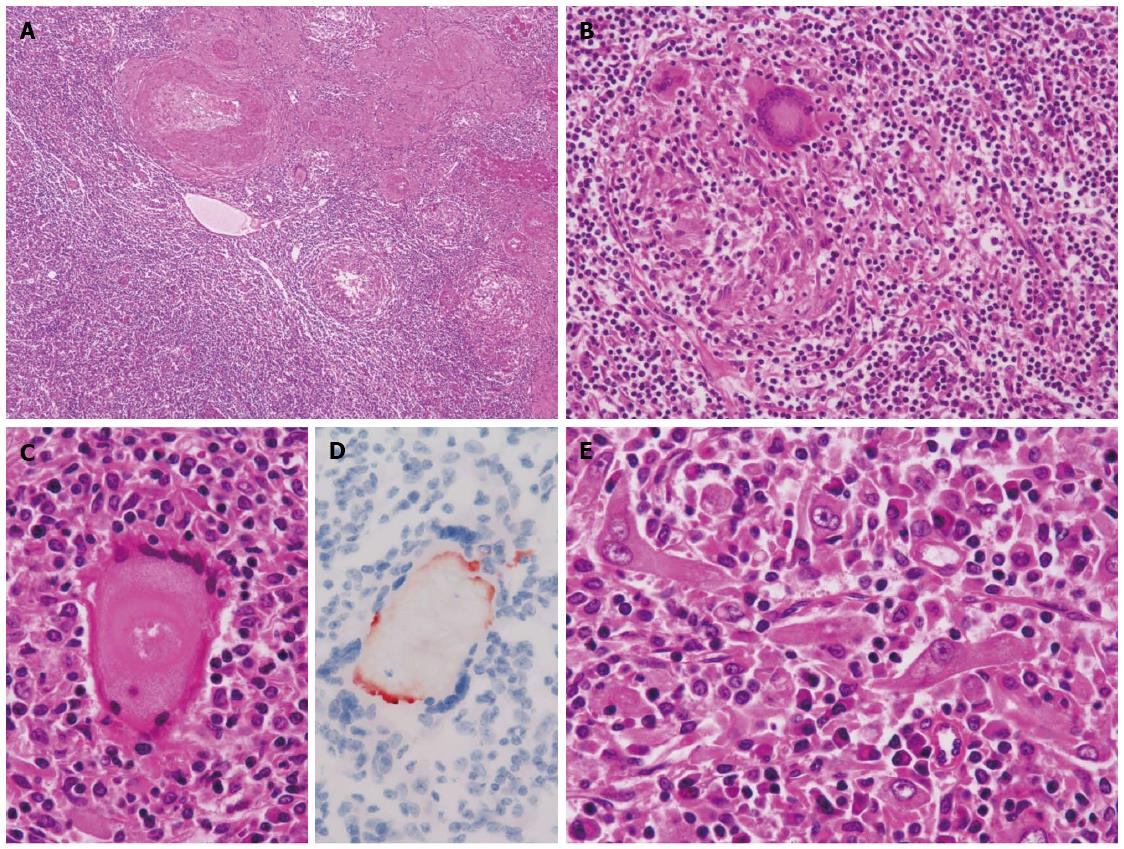Copyright
©The Author(s) 2015.
World J Gastroenterol. Aug 28, 2015; 21(32): 9675-9682
Published online Aug 28, 2015. doi: 10.3748/wjg.v21.i32.9675
Published online Aug 28, 2015. doi: 10.3748/wjg.v21.i32.9675
Figure 2 Histopathological features of the nodule.
A: The nodule contained numerous inflammatory cells. Thick-walled abnormal arteries were observed peripheral to and inside of the nodule [hematoxylin and eosin (HE), × 40]; B: Epithelioid granulomatous features were frequently observed in the nodule (HE, × 200); C: Some of the multinucleated giant cells contained amorphous material (HE, × 400); D: The amorphous material was positively stained by Oil Red O staining (Oil Red O staining, × 400); E: Among the infiltrating inflammatory cells, spindled, histiocytoid or myoid tumor cells with eosinophilic cytoplasm and oval-shaped atypical nuclei with distinct nucleoli were found (HE, × 400).
- Citation: Kai K, Miyosh A, Aishima S, Wakiyama K, Nakashita S, Iwane S, Azama S, Irie H, Noshiro H. Granulomatous reaction in hepatic inflammatory angiomyolipoma after chemoembolization and spontaneous rupture. World J Gastroenterol 2015; 21(32): 9675-9682
- URL: https://www.wjgnet.com/1007-9327/full/v21/i32/9675.htm
- DOI: https://dx.doi.org/10.3748/wjg.v21.i32.9675









